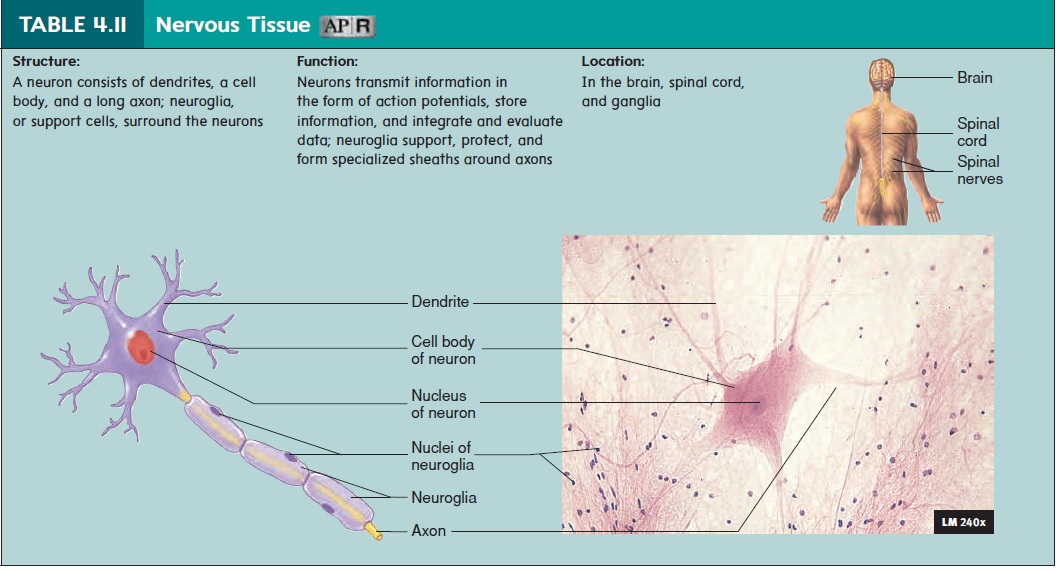Chapter: Essentials of Anatomy and Physiology: Tissues
Nervous tissue
Nervous tissue
Describe the functions of nervous tissue and the structureof a neuron.
Nervous tissue forms the brain, spinal cord, and nerves. It is respon-sible for coordinating and controlling many body activities. For example, the conscious control of skeletal muscles and the uncon-scious regulation of cardiac muscle are accomplished by nervous tis-sue. Awareness of ourselves and the external environment, emotions, reasoning skills, and memory are other functions performed by ner-vous tissue. Many of these functions depend on the ability of nervous tissue cells to communicate with one another and with the cells of other tissues by means of electrical signals called action potentials. \
Nervous tissue consists of neurons and support cells. The neuron (noor′\on), ornerve cell,is responsible for conductingaction potentials. It is composed of three parts: a cell body, den-drites, and an axon (table 4.11). The cell body contains the nucleus and is the site of general cell functions. Dendrites (den′\drı̄tz; relating to a tree) and axons (ak′\sonz) are nerve cell processes (extensions). Dendrites usually receive stimuli leading to electrical changes that either increase or decrease action potentials in the neuron’s axon. Action potentials usually originate at the base of an axon where it joins the cell body and travel to the end of the axon. Neuroglia(noo-rog′\lē-ă; glia, glue) are the support cells of the nervous system; they nourish, protect, and insulate the neurons.

Related Topics